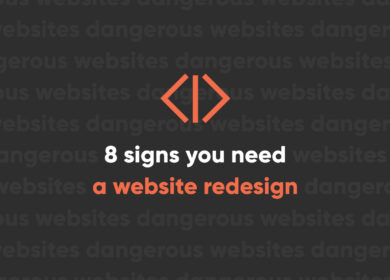
Increasing Conversions: SEO Traffic to Revenue Series

We've reached the part of this series that we've all been waiting for: increasing conversions.
Your content is ranking well in search results and users are clicking through to your site, but how do you convince them to take action?
This is the most crucial part of the process — without conversions, you won't be making a sale. No matter what stage of the buyer's journey your site visitors are at, you need to use your website as a tool to connect with them, get them engaged, and keep them coming back for more.
Quality content
Let's start with the content on your website.
Are you sharing content that appeals to each stage of the buyer's journey? Are you using your content to add value to the user, share more about your business, and demonstrate the effectiveness of your products or services?
We've mentioned it before, but creating high-quality content is an important tactic for gaining your audience's trust and keeping them coming back for more. Create content that demonstrates your industry expertise and effectively answers users' questions. Blogs, case studies, and landing pages are all great touch points to help you reach your audience at different stages of the funnel and nurture them. Put yourself in the shoes of your audience and think about what would be useful in their day-to-day and what additional information they'd want after visiting your site.
Here are a few important pieces of content you should consider implementing on your website:
- Reviews
- Case studies
- Blog posts
- Live chat
Content you create has to align not only with the keywords you're optimizing for, but with the intent of those keywords. For instance, if you're trying to rank for the term 'Minneapolis SEO agency', you'll need to understand that searchers are looking for SEO services in Minneapolis and not to look for educational SEO materials.
Optimizing web pages
If you have great leads landing on your site but they're not getting a great website experience, chances are they won't convert. Remember, your website is your most important marketing tool, so make sure it's working for you. Make it as easy as possible for your website visitors to understand why they're on your website, where they should navigate next, and the value they're getting out of the experience.
Optimize your pages with CTAs and buttons that encourage users to complete an action, links to relevant site pages that make it easy to follow a click path, and use strategic messaging to convince your audience to complete an action that makes sense based on their search intent. The more you understand your audience, the more relevant your pages will be.
It should be easy to find your contact page or to make a purchase. If it takes multiple clicks for a user to find a contact form, they probably won't make it that far.
You should spend some time on your messaging for headlines and CTAs to ensure you're grabbing your user's attention from the jump. You also need to understand your audience and their stage in the buyer's journey to make it even more relevant.
Website design and UX
As an extremely important element to any website, UX will make or break your relationship with your user.
Think about your last bad website experience. What was bad about it?
Maybe it was the slow site speed, the broken links, the cluttered pages, the overwhelming amount of text, or the confusing layout. All of these things directly correlate with users bouncing off of a website after only visiting one page. Remember, time is money, and people don't want to waste their time working through an obstacle course of a website.
Try implementing creative elements that represent your brand and imagery to visually tell the story of your website. You'll want to engage your audience in any way you can, so do your best to make your site interesting, informative, and entertaining. Above all, ensure your site is functional and easy to navigate, and always put the content before the design.
Pay attention to where users are exiting the site and the path they took to navigate to that page. Did they land there from the start or did they have a click path? Try to understand how your customers are using your site and make design changes as needed, whether that means small changes you can handle yourself or bringing in a web design agency to handle larger fixes. You can also ask for feedback on the user's experience to get direct insight into how your site is performing from a user perspective.
Strengthen your organic efforts with paid
Add another layer to your SEO work by running paid ads. This is a great way to generate more awareness, identify leads that are more inclined to make a purchase, and direct traffic to specific spots on your website.
You can also retarget users who have already visited your site and serve them relevant content to push them back to your website toward conversion.
Remember to keep branding and messaging consistent across your paid and organic efforts. You'll want people to recognize your brand right away and have some level of familiarity.
Learn from your site users
Paying attention to the habits of your website users can be a big indicator of how well your site is working as a tool for increasing conversions. Use Google Analytics to learn key performance metrics about your audience, like how well your content is engaging them, how many pages they're visiting, and how long they're staying on your website.
From there, you can make informed changes on how you could make your users' lives easier while making conversions a priority.
Accessibility
An accessible website is non-negotiable. Accessibility is so important for reaching a larger audience and for making it easier for people with disabilities to access information. Here are a few quick ways to improve accessibility:
- Add alt text to visuals
- Label forms
- Use descriptive language in URLs
- Make sure content can be viewed solely using a keyboard
Anyone who navigates to your site should be able to use it effectively, so include accessible elements on your site to make for a more inclusive experience that expands your online reach.
Additional tips
Use the keyword research you conducted at the start of this series to better understand your audience and what they're searching for. This can inspire new content ideas that will help you best appeal to the user and their specific interests or needs. Understanding pain points will take you far in presenting the right offer, product, or solution.
To get a handle on how user-friendly your site is, navigate through it as though you're the user. Would you know how to get to certain pages quickly or would you get stuck? This simple exercise can give valuable insight into how users might currently be using your site and how you can create a better experience through improved click paths, internal linking, and CTAs.
Improve your SEO ROI with Perrill
Improving ROI should be the main focus of your SEO efforts. Pulling traffic to your website is a great starting point, but if you can't get that traffic to convert, you're ultimately executing an awareness campaign.
This blog series should help you generate conversions and grow revenue. You should see a much higher ROI with dedicated SEO work, and you should also get more qualified leads in the door if you're optimizing your website around strategic, focused keywords.
If you feel unequipped to put this much effort into your SEO strategy or just aren't seeing the results you're looking for, we can help. Perrill is a digital agency that specializes in SEO, marketing, website design and development, and more. As a full-service in-house agency, we use a unified digital approach that combines our expertise across digital channels to help our clients win online.
Reach out to learn more; we're looking forward to helping you win online.





